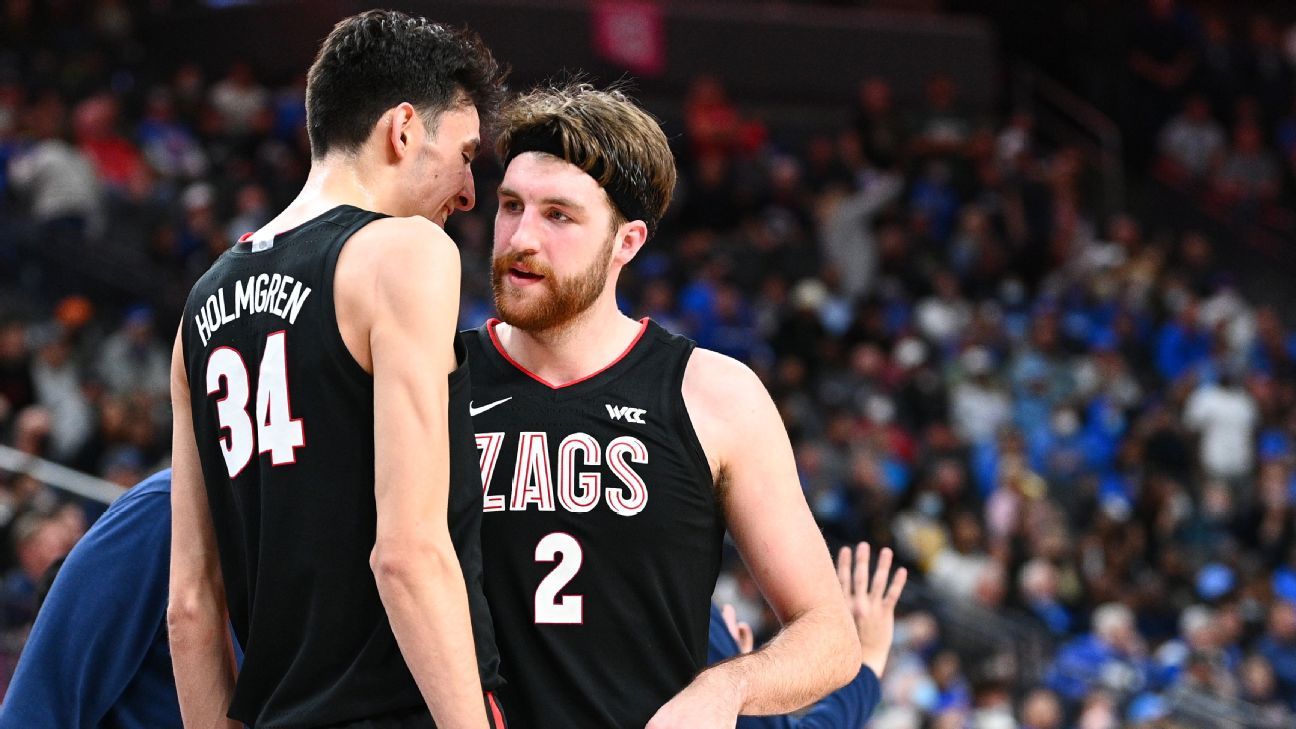Now that the 2022 men’s NCAA tournament field is set, you’ll need the right information to make the right picks in your March Madness bracket. We’re here to help with our annual 68-team preview. The tournament will tip off Tuesday with the First Four from Dayton, Ohio, and the first round begins Thursday. Visit this link for the complete 2022 NCAA tournament schedule. For a list of the 32 automatic bids that have reached March Madness, visit ESPN’s “tickets punched” page.
Brackets are open! Head to Tournament Challenge and fill out your bracket now!
Here’s a brief look at every team in the field:
1-seeds

Let’s get rid of the jerseys and talk facts. You have a Division I powerhouse that has reached the national title game in two of the past four NCAA tournaments. Over a 20-year span, it has produced 10 NBA first-round picks. This year, it is led by two Wooden Award candidates. Drew Timme, who averaged 17.5 PPG and 6.3 RPG, was named WCC player of the year. Chet Holmgren (14.2 PPG, 9.6 RPG, 3.6 BPG), a 7-foot-1 unicorn who is a projected top-three pick in this summer’s NBA draft, won the league’s defensive player of the year award. He has made 41% of his 3-point attempts this season. The team is top 10 in both adjusted offensive and defensive efficiency on KenPom.
It also has just three losses this season: one to a Duke team with five projected first-round draft picks; the second to an Alabama team that also beat Houston, Tennessee and Baylor; and a third at rival Saint Mary’s in the regular-season finale. All three of those teams are going to the NCAA tournament.
Ignore everyone who’s telling you to doubt Gonzaga’s Final Four potential. The Zags are the top overall seed for a reason. They have been the most dominant team in America. They have NBA talent and the most balanced program in the country. And, entering the NCAA tournament, you could make a valid case that this is the best team right now. Let the haters hate. Gonzaga is real.
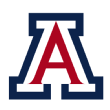
Former Gonzaga assistant Tommy Lloyd inherited a challenge when he was hired by Arizona last April. The cloud that hovered over Sean Miller’s tenure — the result of his ties to an NCAA infractions case and an FBI investigation that rocked the entire sport — seemed to jeopardize the future of the storied program.
Yet, in his first season with the program, and his first season as a Division I head coach, Lloyd could win a national championship with a team whose ascension has been remarkable. He has put together a decorated résumé that includes wins against Michigan, Illinois and a 4-1 record against USC and UCLA. He has three legit stars — projected NBA draft lottery pick Bennedict Mathurin (17.1 PPG), Azuolas Tubelis (14.7 PPG) and Christian Koloko (12.1 PPG, 7.0 RPG) — who could lead Arizona to the Final Four for the first time in 21 years.
The Wildcats have enjoyed a top-15 status in adjusted offensive and defensive efficiency on KenPom throughout the season, a sign of their balance and consistency. Why does that matter? Every team that has won the national title since 2002, except for the miraculous 2013-14 UConn squad, finished the year in the top 25 in both adjusted offensive and defensive efficiency. Arizona, which made more than 49% of its shots inside the arc this season, fits that profile. But it’s fair to question the competition in league play. The Pac-12 was arguably the weakest Power Five conference this season. You know that thing that people do when they question Gonzaga every year? Arizona probably will be spared that illogical assessment.
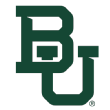
Scott Drew won his first national title last season with a dominant effort. The Bears won all six of their NCAA tournament games by at least nine points, including the lopsided 86-70 victory over Gonzaga in the national title game. But many expected them to take a step back this season. That’s what happens to most championship teams that lose their best players — Davion Mitchell, MaCio Teague and Jared Butler — to the NBA draft.
But Drew’s crew has come roaring back to defend its national championship. Adam Flagler (13.4 PPG, 43.8% from inside the arc) is one of six players on this roster averaging at least 8.4 PPG — a group that also includes projected first-round pick Kendall Brown. And with Arizona transfer James Akinjo (13.4 PPG, 5.7 APG) on the floor, Baylor has forced turnovers on nearly one-quarter of its opponents’ possessions. That’s a lot.
That depth has been significant for a team dealing with key injuries. Jonathan Tchamwa Tchatchoua (8.4 PPG, 6.8 RPG) suffered a season-ending knee injury in early February and LJ Cryer (13.5 PPG, 46.8% from 3) has been sidelined for weeks with a foot injury. The injuries are a concern for this team moving forward, but Baylor is legit, and a tough matchup for the field. Again.
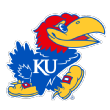
On July 6, 2021, Ochai Agbaji announced he was withdrawing from the NBA draft, one day before the deadline, and would return to Kansas. “I cannot thank my family enough, the NBA teams, my KU coaches and teammates, as well as everyone who supported me in this process,” Agbaji said. “I am so looking forward to next season, playing in front of the best fans in basketball and contending for a national championship.” That decision changed Kansas’ prospects and has positioned the program to chase Bill Self’s second national title. With Agbaji (19.8 PPG, 40.3% from 3) on the floor this season, Kansas has shot 56% inside the 3-point line, per hooplens.com. Agbaji is a Wooden Award contender and a projected lottery pick.
He’s not alone. Christian Braun (14.6 PPG) is a pro prospect, too. And a supporting cast of Jalen Wilson, David McCormack and Dajuan Harris Jr. has been strong enough to help Kansas weather the inconsistency of Arizona State transfer Remy Martin, who had lingering injuries and problems finding his rhythm with this squad. Self is really doing this with six guys, a nucleus of talent that could send him to New Orleans, where the Jayhawks also played in the Final Four in 2012. To win the whole thing this time will require a stellar performance from McCormack, who sometimes shrinks in big moments.
2-seeds
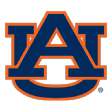
Auburn has put together one of the most shocking performances of 2021-22. Yes, Bruce Pearl had talent. Jabari Smith entered the season a five-star recruit. North Carolina transfer Walker Kessler arrived with something to prove. And Wendell Green Jr. (Eastern Kentucky) and K.D. Johnson (Georgia) had excellent résumés. But when they all stepped on the court together for the first time, it was clear Pearl had assembled a team with a high ceiling and an instant chemistry that fueled Auburn’s 22-1 start overall and 10-0 rally in the SEC. Along the way, the Tigers KO’d Murray State, LSU, Kentucky and Alabama (twice) while Smith (17.1 PPG, 6.9 RPG, 43.6% from 3) looked the part of a potential No. 1 NBA draft pick.
But the Tigers limp into the postseason after a lukewarm finish. Should that concern you? Maybe. Challenges with turnovers and 3s have been a factor in their late-season stumbles.
Auburn won’t show up to any game in the tournament with a talent deficit. But a team that made just 30% of its 3-point attempts in SEC play could get stumped in the later rounds if things end up in a shootout. The last three national champions all shot at least 39% from 3. It’s fair to be concerned about this team’s lackluster showing in the SEC tournament, which ended with a loss to Texas A&M.

After his team’s double-digit loss to North Carolina in the final home game of his coaching career, Mike Krzyzewski said, “the season is not over.” And yes, Duke will still enter the NCAA tournament as a strong contender to win the legendary coach a sixth and final national title.
If the tournament will be decided by talent pools, then it won’t be a surprise to see the Blue Devils cut down the nets on April 4. Paolo Banchero (No. 2), AJ Griffin (No. 11), Trevor Keels (No. 18), Mark Williams (No. 23) and Wendell Moore Jr., (No. 28) are all projected first-round draft picks. The 2012 Kentucky team that set the record for most draft picks from one school had four first-round selections. Only two squads anchored by one-and-done players — Moore is a junior — have won national titles (Kentucky in 2012, Duke in 2015) since the NBA changed its age limit for draftees in 2005. This group could become the third to achieve that feat.
Duke mostly sailed through a mediocre ACC, but it also owns victories over Kentucky and Gonzaga. And 12 of its 16 ACC wins were by double digits. The Blue Devils fit the profile of past national champions, even though they’re 44th in adjusted defensive efficiency. They can overwhelm most teams in America. And they have the players to earn another ring.
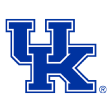
We have witnessed a handful of juggernaut performances by Wooden Award winners in recent years. Iowa’s Luka Garza was a force in 2020-21. Duke’s Zion Williamson was unmatched in 2018-19. But you might have to go back to Wake Forest’s Tim Duncan and his 1996-97 campaign (20.8 PPG, 14.7 RPG) to find a proper comparison to West Virginia transfer Oscar Tshiebwe. Entering Saturday, the Wildcats grabbed 40% of their missed shots with Tshiebwe on the floor, per hooplens.com. That’s wild. And they capitalized on those second-chance opportunities by connecting on nearly 37% of their 3-point attempts in SEC play.
John Calipari has a rare blend of youth and experience this year. Tshiebwe, Sahvir Wheeler and Kellan Grady lead the most efficient offense in the SEC. And TyTy Washington Jr. (12.8 PPG, 4.0 APG) is the freshman who finds ways to impact games even when he’s not scoring.
There was a stretch in January and February when Kentucky looked like the best team in America. Calipari could win a national title in New Orleans, 10 years after Anthony Davis led the program to a national championship at the Superdome. Every Kentucky fan will tell you their concerns though: In the Wildcats’ first 30 games this year, only Grady and Tshiebwe appeared in all of them.
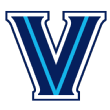
In the final stretch of 2020-21, Collin Gillespie suffered an injury that would have ended his time at Villanova under normal circumstances. He had played too many games — in a career that included a national championship in his freshman season — to earn a medical redshirt. But then the NCAA decided to give every player another year of eligibility because of the pandemic, and Gillespie returned for a fifth season.
With him on the floor this season, Villanova has committed turnovers on just 14% of its possessions entering Saturday’s Big East tournament final, which it won 54-48 over Creighton. The Wildcats finished second to Providence in the conference title race, on a 7-1 run in their past eight games. That said, Jay Wright’s national title teams were better defensively than this team, which has surrendered a 48% clip inside the arc to its Big East opponents.
3-seeds

Jaden Ivey (17.3 PPG, 36.8% from 3 entering Sunday) is one of the quickest players in college basketball, which is why so many NBA scouts and execs love the potential of projected No. 5 NBA draft pick. He can get to the rim whenever he wants and he’s an ace at drawing fouls. He has made 50% of his shots in isolation matchups, per Synergy Sports data. He and Zach Edey (14.6 PPG, 7.6 RPG, 1.3 BPG), a 7-4 star who might be the most difficult matchup in the sport, anchor a team that averaged 80.7 PPG in the regular season, seventh in the country.
But last week, the Boilermakers were 100th in adjusted defensive efficiency. Two things are true with teams hovering around that tier: They don’t win national titles and the potential for postseason disappointment is high. Only two high-major teams since 2002 that finished the season ranked 100th adjusted defensive efficiency even made the NCAA tournament — Temple in 2013 and TCU in 2018. Neither made the second weekend and both were, like Purdue, in the top-30 in adjusted offensive efficiency. Still, the Boilermakers beat Villanova and North Carolina and swept both Illinois and Iowa. This is a good team with NBA talent whose defensive issues should be concerning.

For whatever reason, some people don’t like analytics when discussing a team’s potential. To us, analytics allow us a second look at a team that might be better, or worse, than we think. Tennessee was ranked 13th in the first AP Top 25 poll in March. Per Barttorvik.com, an analytics site, the Vols were the No. 5 team in college basketball since Feb. 1 — until they won the SEC tournament and vaulted to the No. 2 spot — a stretch that includes a top-5 mark in adjusted defensive efficiency. The Vols have a double-digit win over Kentucky and five-point win over Auburn, both in Knoxville, since Feb. 1 too. Kennedy Chandler, a freshman and projected first-round draft pick, has shot 53.8% from inside the arc and 36% from 3 since then, too.
But it’s not all good for Tennessee: The Vols have made just 43.1% of their 2-pointers since Feb. 1, 337th out of 358 Division I teams, per Barttorvik.com.
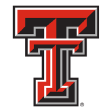
When Chris Beard announced he was leaving Texas Tech, which he had taken to its only Final Four appearance to date (2019), there were concerns about the stability of the program. Those who remained with the team went to athletic director Kirby Hocutt and made a request: promote assistant Mark Adams, who has been coaching since the early 1980s, and was the leader of that Texas Tech defense that carried the Red Raiders to the national semifinals in 2019.
He’s doing it again. In his first year at the helm, Texas Tech recorded the best adjusted defensive efficiency on KenPom and did not lose a regular-season game at home. Its résumé entering Saturday’s Big 12 tournament final against Kansas includes a nonconference win over Tennessee, and a 3-1 record in four conference games against Baylor and the Jayhawks. Let’s hope Kevin McCullar (10.0 PPG, 5.0 RPG, 1.5 SPG) can overcome a sprained ankle that has sidelined him in recent weeks.
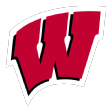
Preseason polls picked Wisconsin to finish 10th in the Big Ten. The projections weren’t outlandish. The Badgers had just lost a fleet of seniors and a disastrous offseason included a report of major turmoil within the program. Few expected them to field a competitive Big Ten squad.
But playing without that spotlight and amid the doubts seems to have helped a Wisconsin team that would win the NCAA’s “biggest surprise award” if that honor existed. Wisconsin sealed the Big Ten title with a thrilling, late-season win over Purdue, punctuating a year that included victories over Houston, Saint Mary’s, Marquette, Ohio State, Iowa and the Boilermakers (twice).
While a top-30 defense and one of America’s lowest turnover rates helped, the unexpected Wooden Award campaign of Johnny Davis (19.7 PPG, 8.2 RPG) is what changed Wisconsin’s fortunes. Expect teams to keep putting an extra defender Davis in the tournament and dare another Wisconsin player to beat them.
4-seeds
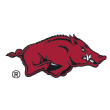
The Razorbacks started their SEC schedule with losses to Mississippi State, Vanderbilt and Texas A&M, not exactly showcasing the potency of a team picked to finish third in the league behind Kentucky and Alabama in the conference’s preseason poll. Then, they rallied and finished the regular season winning 13 of their next 15 — a stretch that included wins over LSU (twice), Auburn and Kentucky.
Arkansas ranked as the No. 6 team in college basketball after suffering that three-game losing streak, entering Saturday’s SEC tournament semifinal against Texas A&M. But the Razorbacks made just 31.8% of their 3-point attempts during that period. That’s why this might be the team in the NCAA tournament with the largest gap between its floor (see: nonconference loss to Hofstra) and ceiling.

Kofi Cockburn (21.0 PPG, 10.6 RPG) put together another incredible season that secured him a spot among the Wooden Award finalists. With Cockburn on the floor this season, Illinois has averaged 14 more points per 100 possessions compared with when he was on the bench, per hooplens.com. Illinois, which earned a slice of the Big Ten title on the final day of the regular season, finished No. 2 in defensive efficiency in the conference, per KenPom — an impressive feat in a league that features nine teams in the NET Top 50.
Illinois has the talent to win multiple games in the NCAA tournament; a double-digit win over Wisconsin proved as much. But the strategy to combat Brad Underwood’s squad also isn’t a mystery. In five of Illinois’ eight losses this season, Cockburn either didn’t play or picked up at least four fouls. Even if he’s available, however, can Illinois beat elite teams to reach a Final Four? Tough losses to Arizona and Purdue (twice) suggest the Fighting Illini might fall short, especially if they run into one of those squads with a couple of NBA prospects.
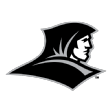
Ed Cooley’s career is a movie script waiting to be written. Cooley was born in Providence, Rhode Island, and worked his way up the coaching ladder before returning home to accept the head-coaching vacancy at Providence in 2011. This year, he led the Friars to their first Big East title.
This isn’t America’s sexiest team. There are no NBA prospects or five-star recruits. But the Friars have been a gritty squad that just finds ways to win battles. A five-point win over Wisconsin. A four-point win over Texas Tech. A four-point win over Connecticut. Nate Watson (13.8 PPG) leads a squad with five players averaging at least 10 points. The hope is that a sports hernia that’s been nagging Al Durham, the No. 2 scorer on the team, won’t linger into the tournament. Even at full strength, though, questions about Providence’s ability to compete against the top teams in the field — the Friars were swept by Villanova in the regular season — remain valid.
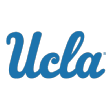
Last season, UCLA made a miraculous run to the Final Four as an 11-seed before getting knocked out by a Jalen Suggs buzzer-beater that will be featured on NCAA tournament highlight reels 100 years from now. But the UCLA squad of 2021-22 hasn’t surprised anyone. Johnny Juzang was a preseason All-American, and had a stellar season that helped him earn Wooden Award consideration. By every significant metric, this year’s UCLA squad, which entering the Pac-12 tournament final possessed the most efficient defense in the Pac-12 and made nearly 50% of its shots inside the arc in league play, is better than last year’s team. With top-15 marks in both adjusted offensive and defensive efficiency on KenPom, it fits the profile of past national champions.
Assuming Juzang’s recent sprained ankle isn’t a concern going forward, and opposing teams continue to miss 3s against them (30.1% in league play), the Bruins could show up again in the Final Four.
5-seeds

Danny Hurley’s squad ended the regular season 6-1 in its last seven games. With 6-9 forward Adama Sanogo on the court during the regular season, the Huskies recovered 39% of their missed shots and made 39% of their 3s. Being a team that makes the most of its second-chance opportunities by nailing shots from beyond the arc isn’t a bad way to enter the NCAA tournament. It’s a strategy that helped this team beat Auburn and Villanova.
The Huskies lost their lone matchup to Big East champ Providence when Sanogo was sidelined by an abdominal injury. In their run to a third-place finish in the league, their Big East opponents made 36% of their 3s against them, 10th out of 11 teams in the conference. Assuming their opponents don’t shoot like the Golden State Warriors, R.J. Cole (15.7 PPG), Tyrese Martin (13.7 PPG, 7.6 RPG, 42.7% from 3) & Co. could get to the second weekend.
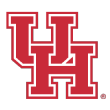
Kelvin Sampson’s coaching effort this season might have surpassed his work with last year’s Final Four squad. That team played great defense and fought its way to the last stages in Indianapolis. But then Quentin Grimes turned pro and DeJon Jarreau also departed. And six weeks into the 2021-22 season, Marcus Sasser, the team’s leading scorer, and Tramon Mark, a key contributor, suffered season-ending injuries prior to the start of conference play. It should’ve been all over now, right?
Sampson didn’t get that message. His squad won the AAC regular-season and tournament crowns. Again. It has lost just two games since Dec. 11. And, heading into the AAC tournament semifinal against Tulane, it boasted those top-15 marks in both adjusted offensive and defensive efficiency numbers on KenPom that Final Four teams tend to possess. Josh Carlton (11.8 PPG, 6.6 RPG, 1.2 BPG) has been an AAC Player of the Year contender and Texas Tech transfer Kyler Edwards (13.6 PPG) has been critical, too. After attempting just eight 3s in four years, fifth-year standout Fabian White Jr., a 6-8 forward, has connected on nearly 39% of his shots from beyond the arc.
The Cougars have weathered adversity all season, but enter the NCAA tournament with a chance to make another run to the Final Four. That said, don’t ignore the lopsided 75-61 loss to Memphis in the team’s regular-season finale. Houston also ended the regular season with just one win against a team ranked within the top 50 on KenPom (Oklahoma State).

In 2014, Shabazz Napier and UConn were an afterthought, until they turned their late-season momentum into a national championship. Iowa is the leading candidate on that “surprise Final Four run” list right now. Per Barttorvik.com, the Big Ten tournament champs were the No. 2 team in America, behind Gonzaga, since Feb. 1. During that stretch, Fran McCaffery’s squad registered 82 or more points in nine games. Keegan Murray also blossomed into a potential first-team All-American and projected draft lottery pick.
His is not a name enough people know. But you won’t find a more impressive stat line outside Lexington than the one the 6-8 forward boasts: 23.7 PPG, 8.6 RPG, 2.0 BPG, 40.6% from 3. He and his twin brother, Kris, (10.0 PPG, 40.4% from 3), are two of four Iowa players averaging double digits. Although the Hawkeyes’ adjusted defensive efficiency in the high 90s doesn’t pass the “looks like a champion” test, this is still an intriguing team.

Randy Bennett won WCC coach of the year honors — despite Mark Few leading Gonzaga to a one-loss conference season featuring mostly lopsided victories. That’s because Bennett improved the Gaels’ record, winning 11 more games than the previous season. Saint Mary’s also finished in the top 10 in adjusted defensive deficiency. Wins against Notre Dame and BYU and the regular-season sweep of San Francisco only boosted its profile.
But the 67-57 home win against rival Gonzaga — just the third loss of the season for the Zags — on Feb. 26 allowed the Gaels to play to their potential. It was the first time Gonzaga had been held to under 60 points since 2018-19, when they lost 60-47 in the WCC tournament, also to Saint Mary’s. Matthias Tass, a 6-foot-10 senior who has shot 55.3% from inside the arc this season, is one of four players averaging double figures for the Gaels.
6-seeds
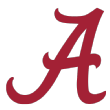
You’ll get a headache if you try to understand Alabama’s 2021-22 season. The Crimson Tide own wins over Gonzaga, Houston, Baylor, Tennessee, LSU and Arkansas, victories that helped them proceed through the season knowing they had an at-large bid mostly locked up. They finished the regular season in the 90s in adjusted defensive efficiency on KenPom, however, putting them among teams that are volatile in the postseason.
The same Alabama team, led by Jaden Shackelford (16.7 PPG), has losses to Iona, Missouri and Georgia. A more recent snapshot of this crew, which plays at a top-20 pace, doesn’t help, either: Since Valentine’s Day, Alabama has made 55.9% of its shots inside the arc, per Barttorvik.com. That’s good, right? But Nate Oats’ squad has also committed turnovers nearly once every four trips up the floor. That’s not good. This feels like a team that either marches to an Elite Eight appearance or gets stopped in the first round.

Niko Medved’s squad, which finished second in the Mountain West race, is a group unlike any other in college basketball. David Roddy (19.4 PPG, 7.6 RPG, 45.5% from 3), Isaiah Stevens (14.9 PPG), John Tonje (9.7 PPG) and Kendle Moore (6.4 PPG), the team’s top four scorers, have all spent their entire careers at Colorado State. Chandler Jacobs (5.6 PPG, 4.1 RPG) is a former Division II All-American who joined the team in November.
The Rams finished the regular season with the Mountain West’s most efficient offense. They swept league champ Boise State and finished 8-1 in their last nine games. And they have wins over Saint Mary’s and Creighton, two NCAA tournament teams. The Rams also surrendered a 51% clip inside the arc against Mountain West teams. This is, however, a solid group.

You have to imagine where LSU might be if it played outside the challenging SEC. In Tari Eason (16.9 PPG, 6.7 RPG, 1.1 BPG, 2.0 SPG, 35.5% from 3), LSU has one of college basketball’s most complete, and underrated, players. The team has made 51% of its shots inside the 3-point line with Eason on the floor this season, per hooplens.com. He’s also one of four Tigers averaging double digits this season.
LSU is top-5 in adjusted defensive efficiency on KenPom, and it plays hard. But its conference isn’t its greatest issue. That would be a 20% turnover rate and a 32% clip from 3, that have helped create an inconsistent résumé with wins over Kentucky, Tennessee and Alabama and losses to Ole Miss and South Carolina. The Tigers also enter the NCAA tournament without Will Wade, who is no longer the head coach due to the scope of the Notice of Allegations the school recently received, per ESPN’s Pete Thamel.

As the Longhorns arrived in Lubbock to face Texas Tech this season, Chris Beard watched as a sea of Red Raiders fans screamed at him from the front seat of the team bus. They were still mad about his departure to their in-state Big 12 rival. But Texas’ is a job with a higher profile, and had always been on Beard’s list of dream gigs (he started his career as a Texas grad assistant). Texas is now the third program Beard has led to the NCAA tournament in six years. But it hasn’t been easy.
The Longhorns have been top 15 in adjusted defensive efficiency but only connected on 32.3% of their 3-point attempts. Timmy Allen (12.3 PPG, 6.5 RPG) is a good player on a team full of good, reliable players. But his team doesn’t have any stars, and its depth took a hit when 6-9 forward Tre Mitchell took a personal leave of absence in mid-February. After a solid start, Texas finished 3-4 in its last seven regular-season games. But the Longhorns also don’t have any bad losses on their résumé, which is anchored by wins over Tennessee and Kansas.
7-seeds

On his best teams, Tom Izzo always had a player he could turn to whenever his team faced critical moments in tough games, including Mateen Cleaves, Draymond Green, Denzel Valentine and Cassius Winston. But Izzo spent this season with a solid team that never identified or produced that star.
And that’s fine. Michigan State still managed wins over Loyola Chicago, UConn, Wisconsin and Purdue on its way securing the program’s 23rd consecutive NCAA tournament appearance. Gabe Brown (11.4 PPG, 37.3% from 3 entering the weekend), pro prospect Max Christie (9.5 PPG) & Co. can clearly play at a high level. But the Spartans struggled in the final weeks of the season, ending with a 6-9 record in their last 15 Big Ten games following a 5-0 start in league play.
This just isn’t one of Izzo’s best teams. A lengthy stay in the NCAA tournament would be a surprise with this group.
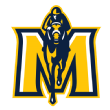
Throughout this season, Memphis Grizzlies star Ja Morant has been tweeting about his alma mater. Three years ago, Morant led the Racers to an upset win over Marquette — Google his dunk over Joey Hauser even if you’ve seen it before — in the first round of the NCAA tournament. Murray State will return to the Big Dance this year after winning the Ohio Valley Conference tournament.
The Racers might not have needed that trophy, however, to earn an invite. Since suffering a 71-58 road loss to Auburn on Dec. 22, they’ve won 18 games in a row and connected on 55.2% of their shots inside the arc, per Barttorvik.com.
This isn’t a fun story authored by a good mid-major. This is the squad that will ruin your brackets and your favorite team’s dreams. Tevin Brown (16.9 PPG, 5.5 RPG, 1.4 SPG, 38.9% from 3), who was a freshman on Morant’s team three years ago, leads the most dangerous mid-major in the NCAA tournament.
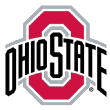
E.J. Liddell‘s Wooden Award-worthy season has been one of college basketball’s most overlooked. The top-15 finalist for the honor is averaging 19.6 PPG, 7.9 RPG and 2.6 BPG, while connecting on nearly 38% of his 3-point attempts. Meanwhile, wins over Seton Hall, Duke and Wisconsin suggest Chris Holtmann’s squad can joust with top-tier teams this season. But the Buckeyes did not do that consistently. The gap in their metrics demonstrates the volatility of this squad, which is ranked 13th in adjusted offensive efficiency but 131st in adjusted defensive efficiency.
Liddell too has been overshadowed by the other Wooden Award contenders in his own league: Iowa’s Keegan Murray, Illinois’ Kofi Cockburn, Wisconsin’s Johnny Davis and Purdue’s Jaden Ivey. His Buckeyes should still be a tough opponent for any team they face in the NCAA tournament.

Losing a player like Evan Mobley — who entered the week averaging 14.5 PPG, 8.0 RPG and 1.7 BPG for a Cleveland Cavaliers squad that is on pace to make the NBA playoffs — did not ruin USC’s shot at the NCAA tournament. His brother, Isaiah Mobley (14.3 PPG, 8.5 RPG, 35.3% from 3), led a team that finished with a 14-6 record in the Pac-12 and anchored its résumé with wins over San Diego State and UCLA.
The Trojans did a lot of their work in the paint. They shot 50% from inside the arc and held opponents to a 41% clip from 3 with Mobley on the floor this season, per hooplens.com. Another thing to note: USC’s Pac-12 opponents made 39% of their 3-point attempts, a number that means the Trojans are either inviting elite shooters to their sweet spots, or preparing to rise if that ridiculous number falls in the postseason.
8-seeds

A 3-4 start to Boise State’s season included losses to St. Bonaventure, UC Irvine and Cal State Bakersfield. Beginning Dec. 1, things changed, though. The Broncos went 21-3 the rest of the way and only lost to Colorado State (twice) and Wyoming, making this crew one of the most consistent teams in college basketball entering the postseason. Per Barttorvik.com, Boise State has been the 25th-best team in college basketball since Dec. 1, and forced turnovers on one-fifth of its opponents’ possessions during that span. Fifth-year standout Abu Kigab (14.7 PPG) is one of five Broncos averaging at least 9.0 PPG this season. There are no impressive nonconference victories on Boise State’s résumé, but winning the title in a league that flirted with four NCAA tournament invitations entering Selection Sunday should count for something.
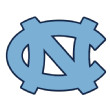
Yes, Hubert Davis spoiled Mike Krzyzewski’s final home game at Cameron Indoor Stadium — with Jerry Seinfeld, Adam Silver and nearly 100 former Duke players who’d come for a party left trying to make sense of the Blue Devils’ 13-point defeat. It was a validating win for Davis in his first season as North Carolina’s head coach. But it was also the culmination of a five-game winning streak, a stretch that moved UNC off the bubble and solidly into the NCAA tournament.
That win at Duke also showcased what the Tar Heels can be: an offensive powerhouse with Armando Bacot (16.5 PPG, 12.5 RPG) thriving in the paint and a collection of shooters on a team that made 37% of its 3-pointers during the regular season. It makes that nine-point Feb. 16 loss to Pitt seem like an anomaly for a group with second-weekend potential — if it plays to its strengths.

For the past six weeks, life has been pretty good for San Diego State — at least whenever it hasn’t had to face Boise State. Since Feb. 6, the Aztecs have gone 11-2. Both losses came against the Broncos, one of them in the Mountain West tournament championship game on Saturday. Despite the frustrations of those defeats, San Diego State has been one of the country’s better teams during that stretch, shooting 39% from 3 and holding opponents to under a 45% clip inside the arc. Cal transfer Matt Bradley (17.0 PPG, 5.3 RPG, 41% from 3) made the all-Mountain West first team.

If “momentum” is real in the NCAA tournament, then Seton Hall could get a boost based off its 8-2 finish in its last 10 games entering the Big East tournament. The Pirates got hot at the right time. Jared Rhoden (15.9 PPG, 6.8 RPG, 80.7% from the free throw line) has been the best and most important player on the roster. His effort has warranted a first-team All-Big East selection and helped Seton Hall overcome the absence of Bryce Aiken (14.5 PPG), the team’s No. 2 scorer who has missed 14 games due to a concussion. That’s a sign of this group’s depth. But Seton Hall’s offense has also had its hiccups: The Pirates made just 44.3% of their shots inside the arc, 10th of 11 Big East teams this season.
9-seeds
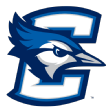
The Bluejays entered their Feb. 23 matchup against St. John’s with a 19-8 record and wins over Marquette (twice), Connecticut (twice) and Villanova. But starting point guard Ryan Nembhard suffered a season-ending wrist injury in that game that could change Crieghton’s postseason fortunes. With Nembhard — the brother of Gonzaga guard Andrew Nembhard — on the court this season, Creighton connected on 55% of its shots inside the arc and held opponents to a 43% clip there.
Creighton finished 1-2 in its final three regular-season games without Nembhard, winning a crucial matchup against UConn. Greg McDermott’s squad, which was the best defensive team in the Big East and also one of its worst offensive performers, could face an uphill battle in the postseason without its top player.

Shaka Smart has lived a few lives. He was the young coach at VCU who led the Rams to the Final Four in 2011. He was the hopeful leader at Texas who recruited NBA talent and reached the NCAA tournament three times but did not win a game. And then, when his future seemed uncertain, Smart moved to Milwaukee and accepted the Marquette job.
It seems to have been the right move. A Golden Eagles squad that lost multiple players in the transfer portal was picked to finish ninth in the league’s preseason poll. But four-star recruit Justin Lewis (17.1 PPG, 7.9 RPG) led Smart’s squad to a tie for fifth place in the league after securing All-Big East first-team honors as a freshman. Marquette also owns a nonconference win over Illinois, beat Providence in league play and swept Seton Hall and Villanova.
The Golden Eagles ended the regular season with the most efficient offense inside the 3-point line in the Big East (53.1%) and connected on 37% of their 3-point attempts. But how did this group suffer double-digit losses against St. Bonaventure and DePaul? Let’s see which Marquette shows up in the NCAA tournament.
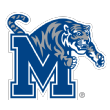
In January, Penny Hardaway went after media members for what he called “stupid” questions during a 4-8 stretch. He later apologized for the expletive-filled rant, but it was clear Memphis was in trouble. So how on earth did this team make the NCAA tournament?
After Hardaway’s rant, the Tigers won 10 of their final 11 games in the regular season. The return of Landers Nolley II, (10.2 PPG entering the weekend) and DeAndre Williams (11.0 PPG) from injuries helped. And Jalen Duren (11.9 PPG, 7.5 RPG, 2.2 BPG), a projected top-five draft pick, has recorded double figures in eight of the last nine games.
Despite missing Emoni Bates due to injury since early February, it’s clear the Tigers are a more cohesive group without him. Two dominant double-digit wins over Houston in a three-week stretch legitimized this late-season run for a Memphis team that, with this talent, will be a dangerous underdog against any foe it encounters in the NCAA tournament. That is, if its turnover rate — nearly one every four trips up the floor — doesn’t lead to a first-round exit.
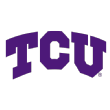
In 2016, Jamie Dixon left Pittsburgh despite reaching the NCAA tournament in 11 of 13 seasons. Dixon has now led TCU to its second NCAA tournament appearance since he joined his alma mater six years ago. That’s two more than Pitt has had since he left.
Now, it was a bit of a complicated route for this group, which sealed its NCAA tournament fate with a pair of late-season wins over Texas Tech and Kansas. The Horned Frogs made just 30% of their 3-pointers during the regular season, but picked up the wins necessary (Oklahoma, Iowa State, LSU) to convince the men’s selection committee of an addition. A 3-6 finish in the team’s final nine regular-season games does, however, highlight its turbulence.
10-seeds

After losing Kellan Grady to Kentucky in the transfer portal, Bob McKillop’s squad was picked to finish sixth in the Atlantic 10. Davidson proceeded to assemble one of the country’s top offensive attacks without its best player from a season ago. The Wildcats fit the profile of an NCAA tournament spoiler. Just ask the Alabama Crimson Tide, whom they defeated 79-78 in December with 53.4% 2-point shooting and 50% 3-point shooting.
McKillop’s squad was No. 1 in the A-10 with a 55% clip inside the 3-point line in league play and finished in the top 10 nationally with a 38.6% mark from beyond the arc during the regular season. The Wildcats also finished in the bottom half in defensive efficiency in league play — but Foster Loyer (16.5 PPG entering Sunday’s A-10 tournament final), Hyunjung Lee (16.3 PPG, 6.1 RPG) and 6-foot-10 center Luka Brajkovic (14.3 PPG, 7.0 RPG, 1.2 BPG, 43% from 3) are capable of leading this team to a few upsets in the NCAA tournament.

Sister Jean is coming back to the NCAA tournament. The nun who held her own news conference — standing room only — during her 11-seeded team’s Final Four run in 2018, is back with the Ramblers. Returning with her is Drew Valentine, the then-29-year-old assistant who was promoted when Porter Moser left for Oklahoma last April. Although he’s young, Valentine has continued this program’s streak of success, which includes last year’s run to the Sweet 16.
This team — like those other Loyola Chicago teams that made a run — is solid on the offensive end (shooting 38.3% from 3) and also had the defensive chops to hold Auburn to under 100 points per 100 possessions in the Ramblers’ Nov. 25 loss (by comparison, Auburn recorded 127 points per 100 possessions in its regular-season win over Kentucky). Is there more magic ahead for fifth-year standout Lucas Williamson (14.0 PPG, 40% from 3)? We’ll see.
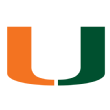
How does a team from one of the weakest major conferences in college basketball right now slide into the NCAA tournament with a NET ranking in the high 50s? Well, this is where it’s important to consider the full picture. Miami amassed a 4-1 record in the regular season against Quad 1 opponents, along with a 10-2 mark on the road. One of those road wins came at Duke on Jan. 8. The Hurricanes finished the regular season a middle-of-the-pack defensive team, second only to Duke in defensive efficiency on KenPom.
Jim Larranaga has thrived with the transfer portal: Kameron McGusty (17.4 PPG, 37.2% from 3) started his career at Oklahoma. Jordan Miller (9.9 PPG) was at George Mason last season. And Charlie Moore (12.5 PPG, 4.4 APG, 36.9% from 3), at his fourth school after stops at Cal, Kansas and DePaul, is a sixth-year leader for this group.

You can’t tell the story of college basketball without mentioning San Francisco. Former coach Pete Newell, who created a series of noteworthy development camps that shaped a generation of big men, led the program to the 1949 NIT title back when the NIT was the sport’s premier championship. In 1955 and 1956, future Boston Celtics legend Bill Russell led the team to a pair of NCAA championships. The Dons were making Sweet 16 runs through the 1970s. Then a series of violations led to a self-imposed three-year suspension.
Todd Golden’s run to the big dance this season — the first for the Dons since 1998 — could signal a new chapter for the WCC program, which was led by fifth-year standout Jamaree Bouyea (16.7 PPG, 37% from 3). The team’s résumé isn’t spectacular, but the Dons finished in the top three in both offensive and defensive efficiency in league play and had a top-25 NET rankings entering Selection Sunday.
11-seeds
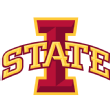
Last year, Iowa State won two games. That’s not a typo. In Steve Prohm’s final year at the helm, the Cyclones finished 2-22. Then the top five scorers from that roster either transferred or turned pro. When T.J. Otzelberger arrived on campus, five years after his most recent stint as an Iowa State assistant, the Cyclones’ future seemed bleak. They were, understandably, picked to finish last in the Big 12.
But Otzelberger and Penn State transfer Izaiah Brockington (17.2 PPG, 7.1 RPG, 1.3 SPG, 37.6% from 3), who was recently named the Big 12 Newcomer of the Year, helped Iowa State get back on track and return to the NCAA tournament. Wins over Texas Tech, Texas and Iowa showed this team’s potential, but its 7-11 mark in league play demonstrates the calamity that can unfold when a great defense (10th in adjusted efficiency on KenPom) is paired with an offensive unit that made just 30.6% of its 3-point attempts in league competition.
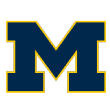
For Juwan Howard, the season began with lofty expectations of his team reaching the Final Four 30 years after he and the Fab Five led the Wolverines to that stage. It seemed plausible, with preseason All-American Hunter Dickinson and five-star recruit Caleb Houstan anchoring his squad. The regular season ended, however, with Howard watching his team on TV while serving a five-game suspension for striking Wisconsin assistant Joe Krabbenhoft after their Feb. 20 matchup.
Without their head coach, Michigan went 3-2 under associate head coach Phil Martelli. It was enough to get the team off the bubble — the Wolverines didn’t put themselves in a worse spot with their effort in the Big Ten tournament, either — but the program has generally fallen short of its preseason potential. Howard has taken responsibility for his actions against Wisconsin, but the only way for Michigan to end the campaign as anything but a squad that missed the mark would be to find success in the NCAA tournament. A team with wins over Purdue, Iowa, San Diego State and Ohio State has that ceiling. But the same team also has double-digit losses to Minnesota and UCF.
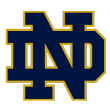
Mike Brey is the MacGyver of veteran coaches. Give him a few vets and some determined reserves, and he’ll make his way to the NCAA tournament. Picked to finish eighth in the ACC’s preseason poll, Brey’s squad ended up in a tie for second place with North Carolina. Yes, the ACC was down this season, but the Fighting Irish were second in defensive efficiency in league play and connected on nearly 40% of their 3-point attempts against ACC opponents.
The team won its lone matchup with North Carolina during the regular season and beat Kentucky in early December, two wins that helped this crew squeeze into the field. Dane Goodwin (13.9 PPG, 44.8% from beyond the arc) is one of four players averaging double figures. This is the ACC’s No. 3 team entering the NCAA tournament. Maybe that doesn’t mean what it once did. But Notre Dame has been steady in the final stretch of the season. And those boys can shoot.
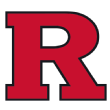
Rutgers isn’t usually the subject of a history-making event. In February, however, it became the first unranked team ever in the sport to beat four consecutive ranked teams (Michigan State, Ohio State, Wisconsin and Illinois). That turnaround changed the Scarlet Knights’ fortunes, as Ron Harper Jr. (15.6 PPG, 39% from 3) & Co. led the program to its second consecutive NCAA tournament appearance — a feat that didn’t seem certain after the team finished 2-3 in its final five regular-season games.
Losses to DePaul, Lafayette, UMass, Minnesota and Northwestern drove the team’s NET up to the 70s leading up to Selection Sunday. But Rutgers, which also beat Purdue and Iowa, toppled the top teams in the Big Ten. That version of the squad can advance in the NCAA tournament.

Sometimes it takes a team a few weeks — or even months — to figure things out. A lot of things can happen between November and March. Some players grow. Others regress. Some coaches find the right formula. Others can’t stop the tailspin. It’s what makes college basketball an unpredictable sport.
Just ask Virginia Tech, the ACC tournament champions after dominating Duke 82-67 on Saturday at Madison Square Garden. On Jan. 26, the Hokies were a 10-10 program overall and 2-7 in the ACC after suffering their sixth defeat in eight games. Losses to NC State and Boston College during that rocky chapter suggested this team would fail to find a rhythm in Mike Young’s third season. Instead, the Hokies will go to their second consecutive NCAA tournament. Barttorvik.com has them as the 14th best team in the country since the start of their current 13-2 run, with a 39% clip from 3 during that stretch. With Keve Aluma (15.7 PPG) on the floor, Virginia Tech has held its opponents to just 95 points per 100 possessions, per hooplens.com.
12-seeds

Indiana hired Mike Woodson, who starred for the program in the late 1970s, last year to restore its name and push the program into the Big Ten’s top tier again. In his first season, Woodson has led his alma mater to its first NCAA tournament since 2016. It wasn’t easy. In a competitive Big Ten league, the Hoosiers finished the regular season with a 9-11 record after connecting on just 32% of its 3-point attempts. But they also had the league’s most efficient defense, which helped them secure a sufficient number of quality wins to earn the at-large invite.
A 2-7 stretch in Indiana’s final nine games of the regular season did not help the team’s argument for a bid. Still, if Trayce Jackson-Davis (18.1 PPG, 8.2 RPG, 2.4 BPG) is on, Indiana could make things interesting for its first NCAA tournament opponent.

There were moments last season when Chris Jans’ team would have to dodge tourists on the way to breakfast and workouts. The whole world was dealing with isolation and a new normal during the worst of the pandemic. But Jans had to move his entire program to Arizona just before the season because the state of New Mexico had banned athletic competition due to pandemic restrictions. The Aggies lived at a Phoenix resort for months.
A year after that chaos, New Mexico State has secured a spot in the NCAA tournament — its fourth under Jans — after defeating Abilene Christian 66-52 in Saturday’s WAC tournament title game. The victory also seals the fourth 25-win season of Jans’ tenure. Teddy Allen, who had made previous stops at West Virginia and Nebraska, averaged 19.3 PPG and earned WAC Player of the Year honors on a team that led the conference in offensive efficiency, per KenPom.

The problem with bubble talk is that it’s so easy to miss the bids quietly rising to steal your favorite team’s opportunity. A surprising burst for one team can end the dreams of another. Chris Mooney’s squad finished ninth in defensive efficiency in league play and lost three of its final five games in the regular season. It has losses to Drake, Saint Joseph’s and George Mason. And the Spiders had a NET ranking of 82 entering the Atlantic 10 tournament title game against Davidson on Sunday.
March doesn’t care. Richmond earned the league’s automatic bid with a 64-62 win against the Wildcats, and the NCAA tournament gains one of the best stories in the sport. Grant Golden (14.3 PPG) collapsed twice in a game as a freshman in 2016-17, and he missed the rest of the season after undergoing a heart procedure. He received a medical redshirt and played the next four years. This season, the NCAA rules gave him a sixth year, and now Richmond will make its first NCAA tournament appearance since 2011.

The NCAA tournament is always more fun when a mid-major star or two has a breakout weekend. UAB might have one of those guys in the first weekend. Jordan Walker is averaging 20.2 PPG and connecting on 40% of his 3-point attempts this season for a Blazers squad that beat Louisiana Tech 82-73 in the Conference USA tournament championship game on Saturday. Walker, who had previous stops at Seton Hall and Tulane, also creates opportunities for his teammates: UAB has made 40% of its 3-point attempts with Walker on the floor, per hooplens.com.
It’s highly unlikely UAB will be favored in its opening round matchup. But Walker’s a game-changer, who could put his team on his back and pull off an upset, the same way it did as a 14-seed when it upset 3-seed Iowa State in the opening round of the 2014 NCAA tournament.

At 7,220 feet above sea level, Arena-Auditorium in Laramie, Wyoming, is the highest Division I basketball arena in the country. Fifth-year star Hunter Maldonado (18.4 PPG, 5.7 RPG, 6.4 APG) claims he knows within the first five minutes of a home game if an opponent is struggling with the thin air. The Cowboys finished the season 14-1 at home and, with the help of that home-court advantage, put together a résumé worthy of the school’s second NCAA tournament appearance since 2002.
Life could get tougher once they descend from the mountains for the NCAA tournament, though. While Wyoming achieved an 8-5 record on the road, the Cowboys did not secure a top-50 KenPom win outside their home arena. Wyoming did make nearly 53% of its shots inside the arc in Mountain West action, a sign that its sharpshooting travels well.
13-seeds

On Saturday, John Groce led his third program (after Ohio and Illinois) to the NCAA tournament. A 75-55 win over Kent State, which was favored by three points, secured the invite for the Zips, who will make their second appearance since 2013. Get to know Ali Ali (14.2 PPG, 39.4% from 3), who had 17 points in his team’s one-point loss to Ohio State, Akron’s first game of the season. They deserve full credit for this run. But even though the Zips led by nine at halftime and won by 20, the narrative around the MAC tournament title game will not focus solely on them: Three Kent State players, including starting guard Malique Jacobs, were suspended for the first half, while another was suspended indefinitely.
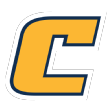
In his 20 years as an assistant coach with five different programs — most recently at Wisconsin — Lamont Paris learned a lot. And Chattanooga has benefited since he arrived as head coach in 2017. The team reached its first NCAA tournament since 2016, after David Jean-Baptiste launched a 30-footer in overtime to seal the win against Furman in the Southern Conference tournament title game. The Mocs have won five in a row entering the NCAA tournament. Malachi Smith (20.1 PPG, 41.5% from beyond the arc) is top-20 nationally in scoring. Kansas transfer Silvio De Sousa (11.1 PPG, 7.0 RPG), who had a controversial stint in Lawrence, has been a key contributor, too.

South Dakota State Jackrabbits
South Dakota State’s first opponent will likely be favored to win. But the opposing coach will hate how it happened. The Jackrabbits have the profile of a team that can spoil dreams. They have averaged 86.7 PPG, second in the country to Gonzaga. During their unblemished run through the Summit League’s regular-season slate, they hit 90 points or more seven times.
Since the start of league play, South Dakota State has shot 59% from inside the arc (seventh in the nation in that stretch) and 45.3% from 3 (the top mark in America during that span). Douglas Wilson (16.5 PPG, 40% from 3) is one of three South Dakota State players who are averaging double figures and connecting on at least 40% of their 3-point attempts. To whichever team has to face this explosive underdog in the opening round: good luck.

Since falling to Big East regular-season champion Providence on Dec. 7, Vermont has lost just one game, by one point in overtime:75-74 at Hartford on Valentine’s Day. The Catamounts put together one of the country’s most dominant championship performances and were nearly unblemished for three months. In the America East tournament, John Becker’s squad won three lopsided games: against NJIT (39 points), Binghamton (32 points) and UMBC (39 points). They made 41% of their 3-point attempts in league play and were also the league’s top defensive team. Ryan Davis (17.1 PPG, 41% from 3) and Ben Shungu (16.0 PPG, 42% from 3) were among the nation’s top duos this season.
14-seeds

Colgate’s 74-58 win against Navy for the Patriot League tournament trophy was its 15th consecutive victory, a streak that started on Jan. 31. The league’s regular-season champ was No. 1 in offensive efficiency and No. 2 in defensive efficiency, respectively, in league play. Plus, the Raiders won their three conference tournament games by 54 points combined.
Colgate’s run is one of the most dominant efforts in college basketball this season. The Raiders’ offensive capabilities could make them an interesting first-round hopeful. About four out of every 10 field goal attempts by Colgate are 3s, with the Raiders finishing second in the country in shooting from beyond the arc (40.1%). Earlier this season, they scored 100 points in a win against Syracuse. The Raiders won’t fear any team in the tournament.

Here’s the résumé of the head coach who just led Longwood to its first NCAA tournament: chief financial officer, international lawyer who worked in London, founder of an oil and gas company. A year before Griff Aldrich’s program moves into its new $15 million facility, the Virginia school will make history with its first NCAA tournament appearance since becoming a Division I member in 2007.
A year ago, the Lancers were a CBI team that won 12 games. Now, they’re one of the best stories in the NCAA tournament. And they’re going to come out firing from all angles: They’re top-10 nationally with a 39% clip from the 3-point line and have an on-fire Justin Hill (14.2 PPG, 4.2 APG) as their leader.

In 1996, Danny Sprinkle was a freshman averaging 9.8 PPG for a Bobcats squad that reached the NCAA tournament for just the third time in school history. On Saturday, Sprinkle — who had transferred to Montana Tech after his freshman year, and averaged 13.4 PPG and shot 41% from 3 over four years — led the Bobcats to their fourth NCAA tournament appearance by winning the Big Sky tournament championship. The 87-66 win over Northern Colorado was the team’s sixth consecutive victory.
Turning to a former star to lead a program back to prominence has not worked for multiple teams. But Sprinkle has now secured his alma mater an NCAA tournament berth twice in his three years there (the first was to the 2020 tournament, which was canceled). He was already a hero. Now, the coach who led a program that made 37% of its 3-point attempts this season is a legend.

While the country tried to figure out how to play sports in the 2020-21 season, the Ivy League decided to cancel its entire season due to COVID-related concerns. That means this is the first time since 2019 that an Ivy League team has had the opportunity to qualify for an NCAA tournament. That reality elevated the stakes of the Princeton-Yale tournament title game Sunday. Yale coach James Jones secured his second consecutive NCAA tournament appearance and third appearance overall since he arrived in 1999. He’ll turn to star guard Azar Swain (19.1 PPG). With Swain on the floor, Yale has made 52.2% of its shots inside the arc, per hooplens.com.
15-seeds

In defeating Long Beach State by a single point in the Big West tournament title game Saturday, Dedrique Taylor secured the second NCAA tournament appearance of his tenure with the Titans. The team relied on its star for the 72-71 win, and it worked out the way it has over the past few months. With E.J. Anosike (16.5 PPG, 8.3 RPG) on the floor this season, the Titans have held their opponents to just 91 points per 100 possessions, per hooplens.com. The Titans made 76.4% of their free throws this season, a top-50 mark in college basketball. They’ll be a long shot against whomever they face in the NCAA tournament. They do not own a win over a top-100 KenPom team. But Anosike — who previously played at Sacred Heart and Tennessee — will be a tough matchup for any team the Titans encounter.
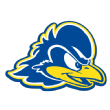
Eighteen years ago, Jameer Nelson won the 2004 Wooden Award after leading St. Joseph’s to an undefeated regular season and an Elite Eight appearance. Last weekend, his son, Jameer Nelson Jr. (13.7 PPG, nearly 37% from 3), scored 10 points in Delaware’s 59-55 victory against UNC Wilmington to win the CAA tournament title game and qualify for its first NCAA tournament since 2014.
The Blue Hens won three consecutive games to get the tournament trophy — including wins against two of the three teams responsible for Delaware’s three-game losing streak to end the regular season (Towson, UNC Wilmington). That’s just more evidence of the unpredictability of the postseason. Next, Nelson will try to add his own chapter to the family’s list of NCAA tournament successes.

This is the most complicated, and possibly controversial, team in the NCAA tournament. Jacksonville State lost to Jacksonville in the semifinal of the Atlantic Sun tournament. Jacksonville then lost to Bellarmine — which is midway through its Division I transition and ineligible for the NCAA tournament — in the title game. It all seems unfair, but Jacksonville State has earned the league’s automatic bid, its first since 2017, because it had the best regular-season conference record (13-3).
The Gamecocks finished 16-4 in their past 20 games and made 40% of their 3-pointers in league play. Plus, Darian Adams (15.6 PPG, 38.5% from beyond the arc) was one of the top players in the conference. And Ray Harper was named Atlantic Sun Coach of the Year. But his team’s path to this juncture is worth debating.

Saint Peter’s is a small (2,700 undergraduates), private Jesuit school in Jersey City, New Jersey. It is one of the original members of the MAAC. Many will learn about this school, and program, now that it has made the NCAA tournament for the first time since 2011 — and fourth time total — after defeating Monmouth 60-54 in the MAAC tournament title game on Saturday. Coach Shaheen Holloway, a star at Seton Hall in the late 1990s, had struggled to get the program off the ground. Last season was the Peacocks’ ninth losing season in 10 years. But Saint Peter’s has made strides. Saturday’s game was the seventh consecutive win for a team that held its opponents to a 44.1% clip inside the arc, a top-15 mark nationally.
16-seeds
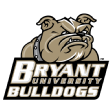
A fight in the stands became the storyline attached to Bryant’s 70-43 defeat of Wagner in the Northeast Conference tournament title game. That’s too bad, because the victory also demonstrated the dominance the Bulldogs had over the league on their way to the first NCAA tournament appearance in the school’s Division I history. Peter Kiss (25.1 PPG) will probably continue to talk trash — the way he did against Wagner — until an opponent sends his team home. His confidence is not fraudulent, though. Bryant’s dominant tournament title victory was its 16th in 17 games. This team shoots a lot of 3s and tries to capitalize on second-chance opportunities. The Bulldogs’ defense is average, but their philosophy is to play at a pace on offense that opponents generally can’t handle.

While most of college basketball celebrated more normalcy this season compared to last year, some programs still dealt with significant challenges related to COVID-19. Rob Lanier’s team endured multiple pauses that affected large portions of its schedule in November, December and January. After losing its first four Sun Belt games, however, Georgia State found a rhythm, winning 12 of its next 13 by forcing turnovers on nearly one-quarter of its opponents’ possessions, per Barttorvik.com. The Sun Belt’s top defensive unit was also one of its worst offensive groups (27.4% from 3 in league play). But Corey Allen (14.7 PPG) and his teammates have been on a wild run over the past six weeks, a chapter that culminated with the Panthers’ first NCAA tournament appearance since 2019.

Despite the COVID-19 interruptions that sidelined his program for three weeks from late December to early January, Rob Jones manufactured the best season of his tenure so far with a 24-6 campaign that includes an MEAC tournament championship after defeating Coppin State 72-57 on Saturday. The Spartans will enter the NCAA tournament with a 9-1 record in their past 10 games.
Joe Bryant Jr., (16.6 PPG, nearly 92% from the free throw line) and his teammates won’t have many believers outside their program. Jones, however, just has to show his team the film from a past run as encouragement: Ten years ago, a 15-seed Norfolk State upset 2-seed Missouri in the first round. Norfolk State supporters definitely understand the magic that’s possible in March.

Texas A&M-Corpus Christi Islanders
Context is important when recognizing any achievement by a team that has punched its tournament ticket. Prior to the 1999-2000 season, Texas A&M-Corpus Christi had never played Division I basketball. That transition can be arduous for any program. In its first year as a member of the Southland Conference (2006-07), following seven years as an independent, the Islanders won the league tournament to make their first NCAA tournament appearance. On Saturday, Steve Lutz led the program to its second, via a 73-65 win against Southeastern Louisiana. Since a five-game losing skid early in conference play, the Islanders have won seven of their past eight, while making more history within the program. Isaac Mushila, a 6-5 forward, leads the team with 13.5 PPG. The Islanders also had the top offensive rebounding rate in the league.

Long before the Philadelphia 76ers were trying to figure out their next steps with Ben Simmons, Johnny Jones was wracking his brain as LSU’s head coach and searching for ways to use the future NBA All-Star in his one-and-done 2015-16 season. The Tigers finished 19-14 that year and missed the NCAA tournament. Jones was fired a year later, a move that could have defined his career. But he found a home at Texas Southern, which will reach its second consecutive NCAA tournament appearance after Saturday’s 87-62 win against Alcorn State for the SWAC tournament championship. It was another high for the program nearly three months after John Walker III (9.6 PPG, 39.5% from 3) led his team in scoring (13 points) in a 69-54 win at Florida on Dec. 6.

Scott Nagy’s squad earned its first NCAA tourney trip in four years by relying on its offense to launch a late-season turnaround that ended with a Horizon League tournament championship. Wright State had three of the league’s top players: Tanner Holden (19.8 PPG), Grant Basile (18.5 PPG, 8.6 RPG, 1.6 BPG) and Trey Calvin (14.3 PPG, 38.1% from 3). With them on the court this season, Wright State made 55% of its shots inside the arc, per hooplens.com. Nagy’s team has cracked 80 points or more in 11 games, too. To earn the Horizon League tournament title, Wright State beat regular-season champ Cleveland State and Northern Kentucky, which finished third in the standings.
